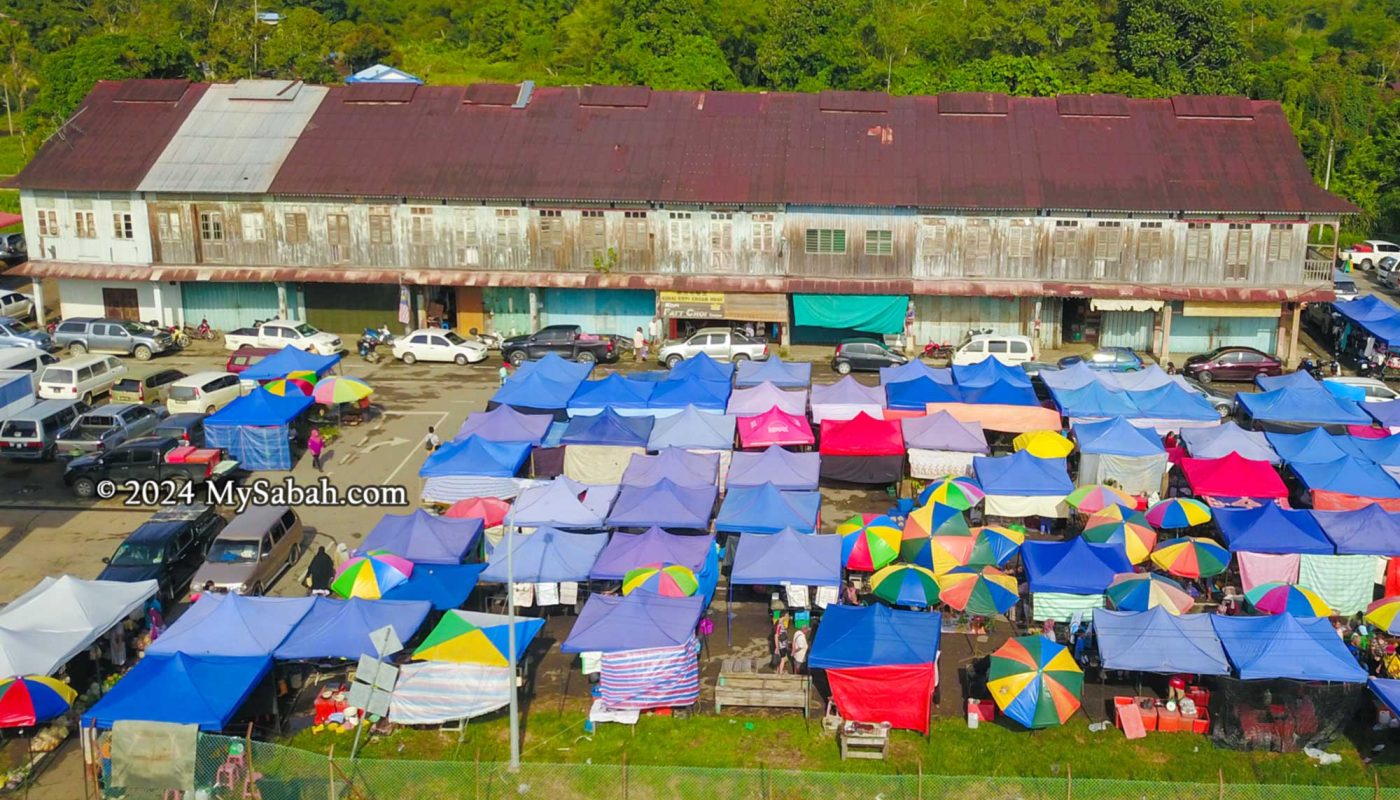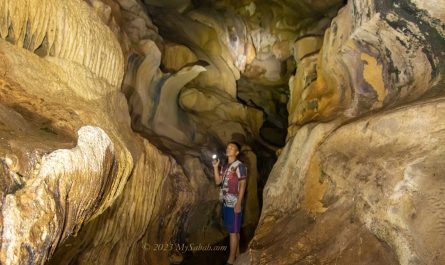Isn’t the feeling of nostalgia wonderful? Whether it’s listening to oldies songs, donning vintage fashion, or gazing at black-and-white photographs, it’s like taking a journey back in time—a journey filled with fond memories and reflections on history.
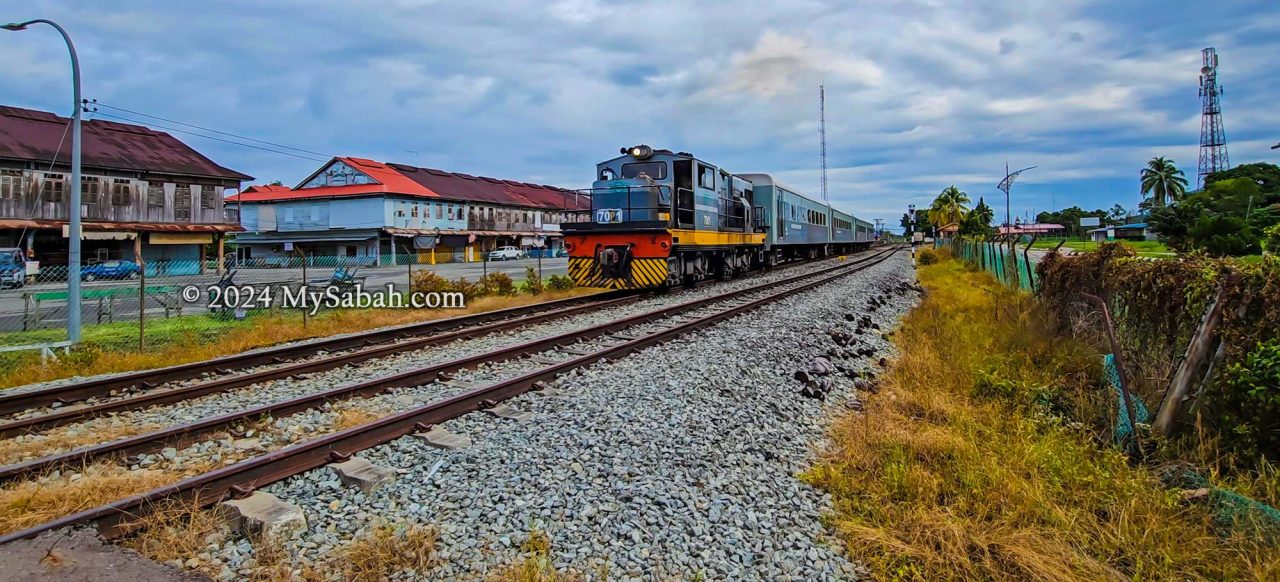
Amidst the rising tide of featureless cement buildings in Sabah, one can’t help but appreciate the nostalgic charm of the pre-World War II and post-war wooden shophouses in Membakut town. These colonial relics, meticulously preserved on the West Coast, stand as enduring testaments to Sabah’s past. Constructed during the British colonial era, these shophouses line up parallel to the railway, once vital arteries for transporting agricultural goods along the west coast route to the port of Jesselton, now known as Kota Kinabalu City (KK in short).
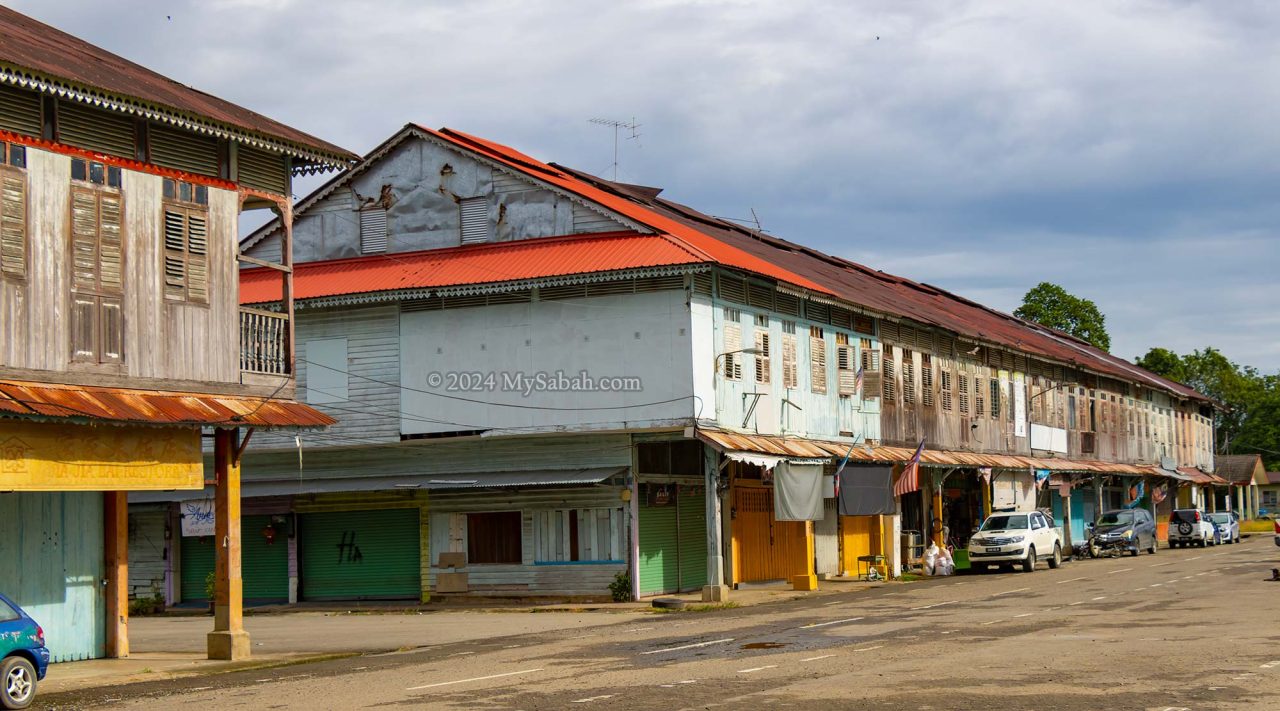
Pre-War Shophouses
Dating back to the 1930s North Borneo era, two wooden shophouses in Membakut serve as captivating relics of the past, offering a window into the bustling railway station and vibrant town life of yesteryears. Positioned adjacent to these pre-war structures stands a post-war shophouse, constructed in the early 1950s, along with several other century-old buildings, all clustered within a mere 200-metre radius.
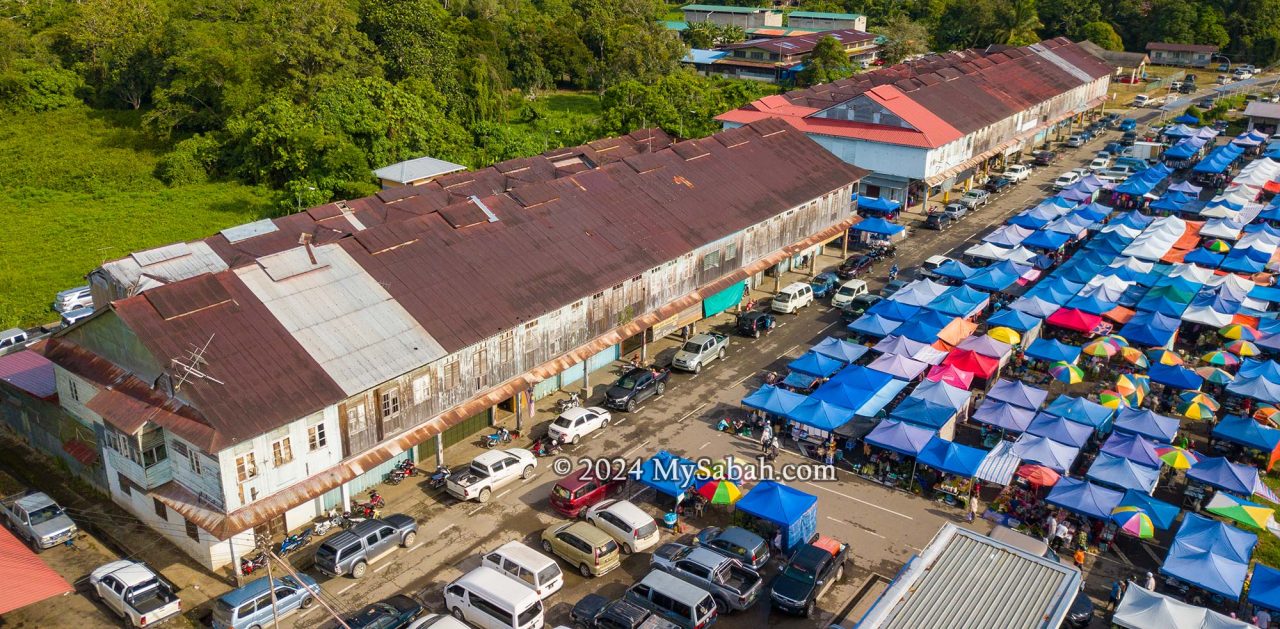
Membakut, situated along the 134-kilometre railway line, was a vital stop on the North Borneo railway (now Sabah State Railway) during its peak. The ornate bargeboards adorning Membakut’s wooden shophouses bear testimony to the town’s erstwhile prosperity. These architectural details, meticulously crafted, reflect a bygone era when the railway was at the heart of the township’s economy. Remarkably, the railway still operates today as Borneo’s sole rail network.
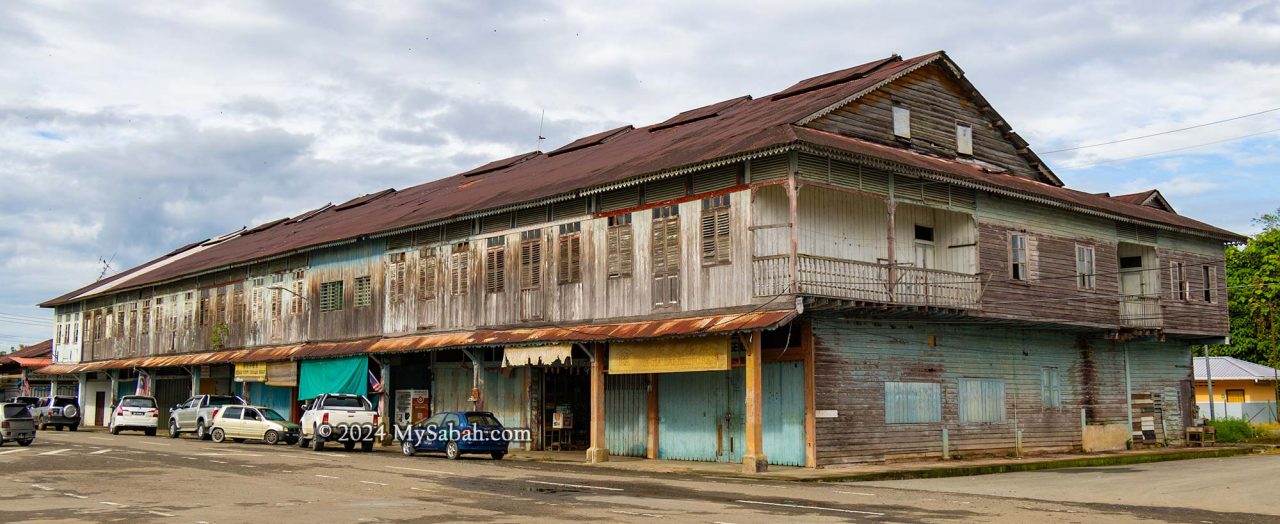
Century-old wooden houses, such as those in Membakut, are characterized by intricate hand-crafted embellishments, including decorative trim, carved woodwork, and ornate moldings. The original facade of the pre-WWII Membakut shophouses boasts louvered casement windows, complemented by half-doors at the shoplot’s center. Transom openings above each window ensure ample natural light floods the upper floors, even when the louvred panels are closed.
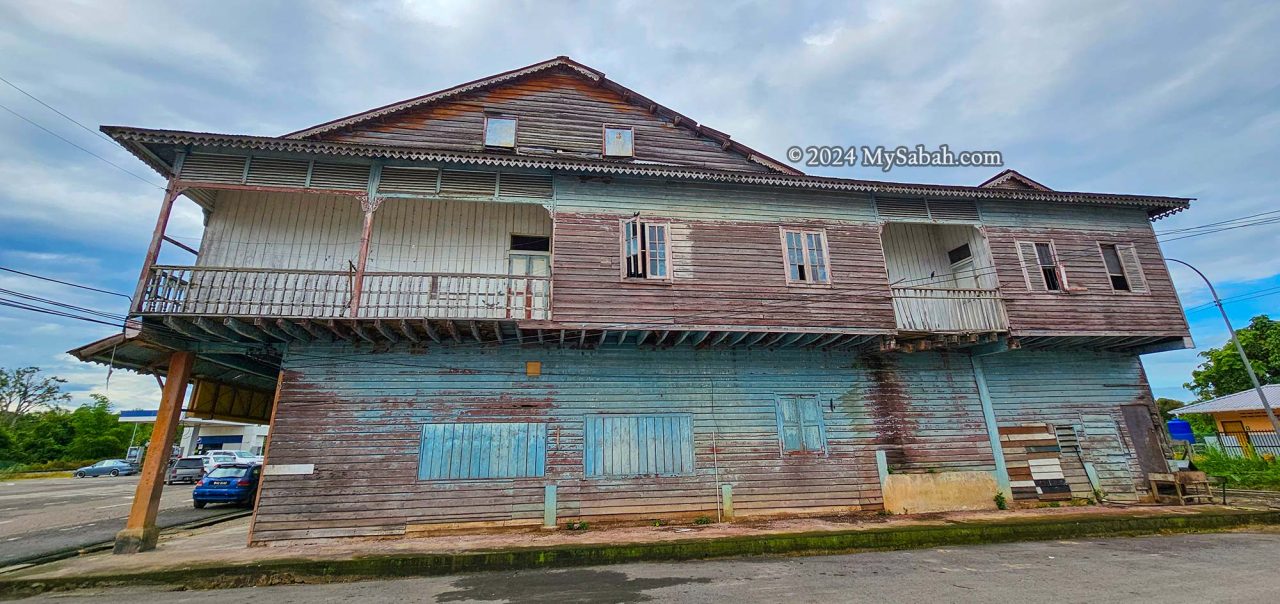
Turning to the side elevation of the pre-WWII Membakut shophouses reveals extended upper floors, complete with a main verandah at the front and a secondary one at the rear. This dual-purpose structure—part shop on the ground level, part residence above—epitomizes the essence of a shophouse.
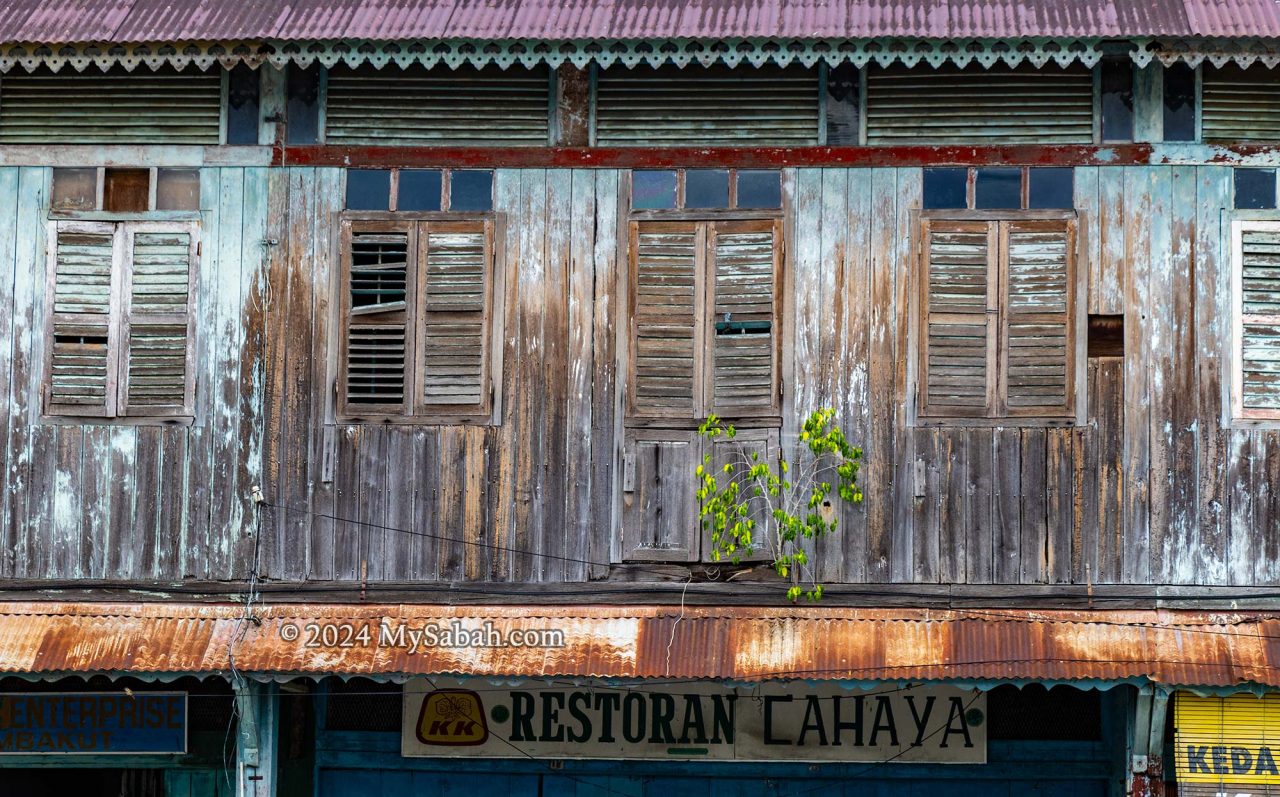
While concrete etchings suggest the construction year of 1932, there is ambiguity surrounding whether this date denotes the building’s inception or merely an upgrade to the pavement. Consequently, the true age of these pre-WWII shophouses may exceed the indicated date significantly.
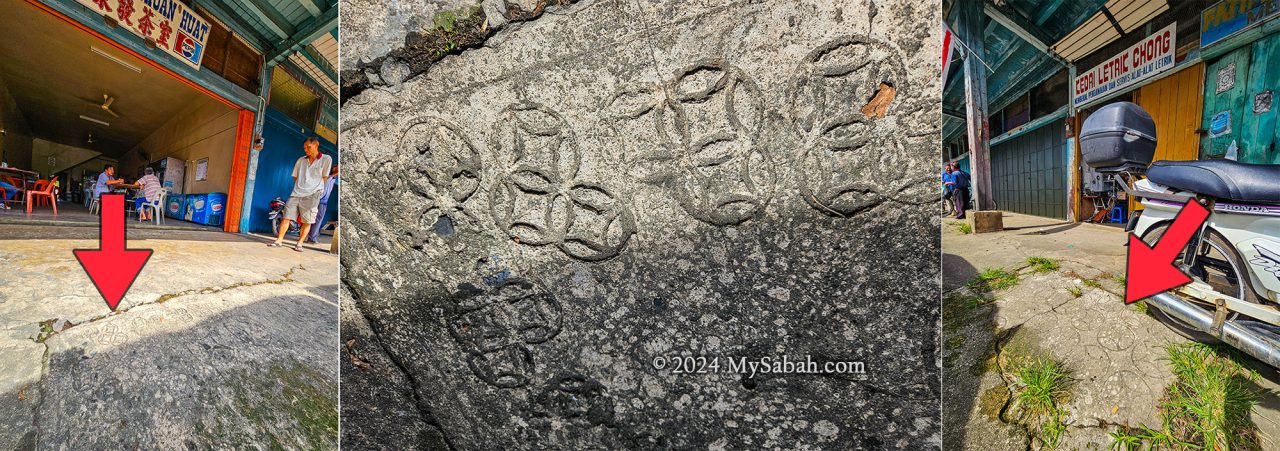
The Interior
After exploring the old buildings and tamu markets, my friends and I grabbed breakfast at Kedai Kopi Chuan Huat, a Chinese coffee shop in one of the pre-war buildings. The Teo family, who run the place, noticed our interest in the architecture and kindly gave us a quick tour of their shophouse.
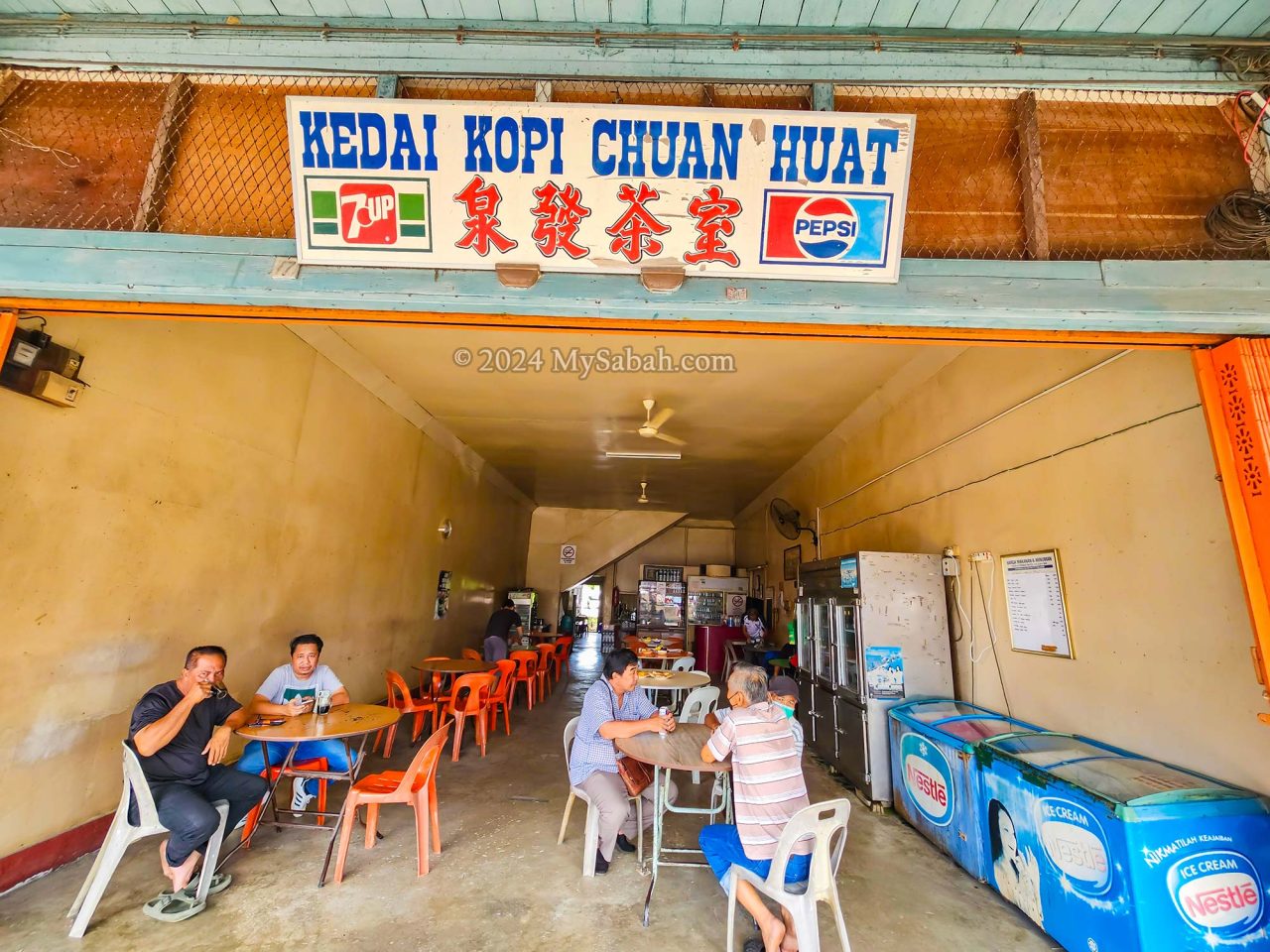
Traditional Sabah shophouses from the British colonial era typically have two levels. The ground floor serves as the shop, while the kitchen, airwell, and toilet are at the back. Floods were common back then, hence the lower level’s concrete floor.
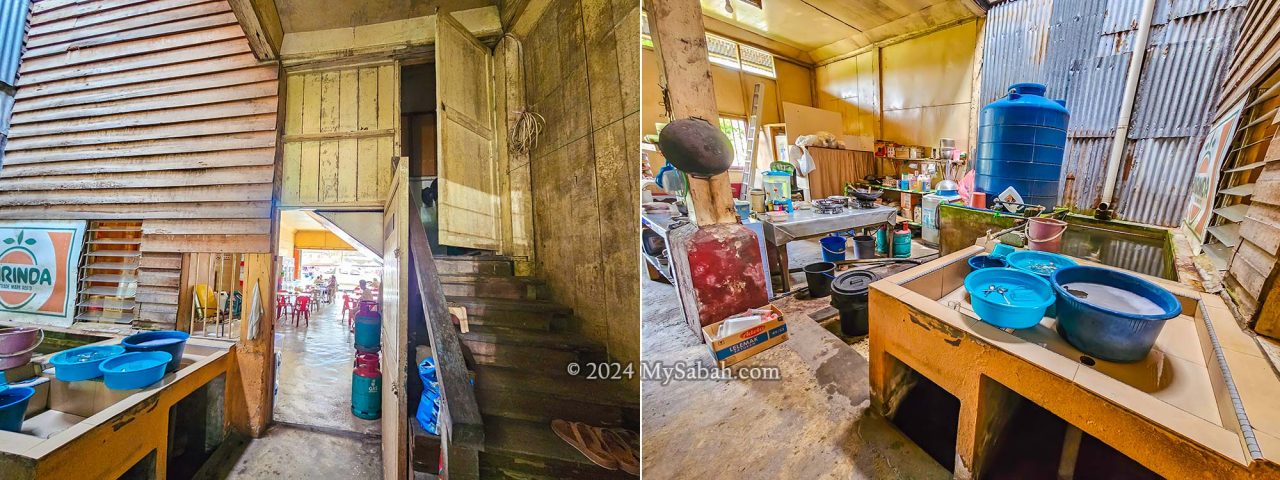
We climbed a covered staircase to the living quarters upstairs. Because of its age, the fire department advises against living here. So, most people have moved out, and their shops are closed. A few still run businesses downstairs, but no one lives above anymore.
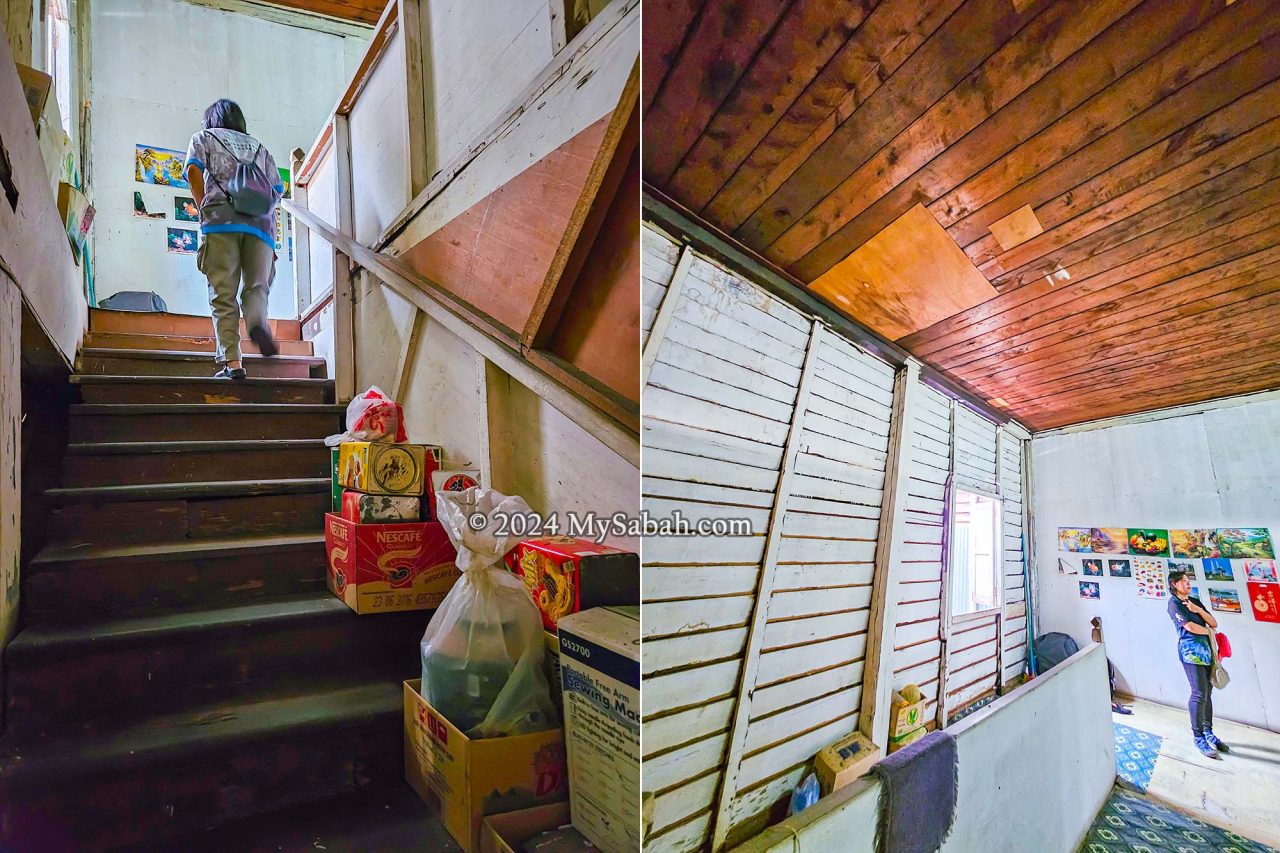
Walking upstairs felt like stepping into the past. I felt a sense of déjà vu, recalling childhood memories spent in similar buildings where my great-grandparents lived.
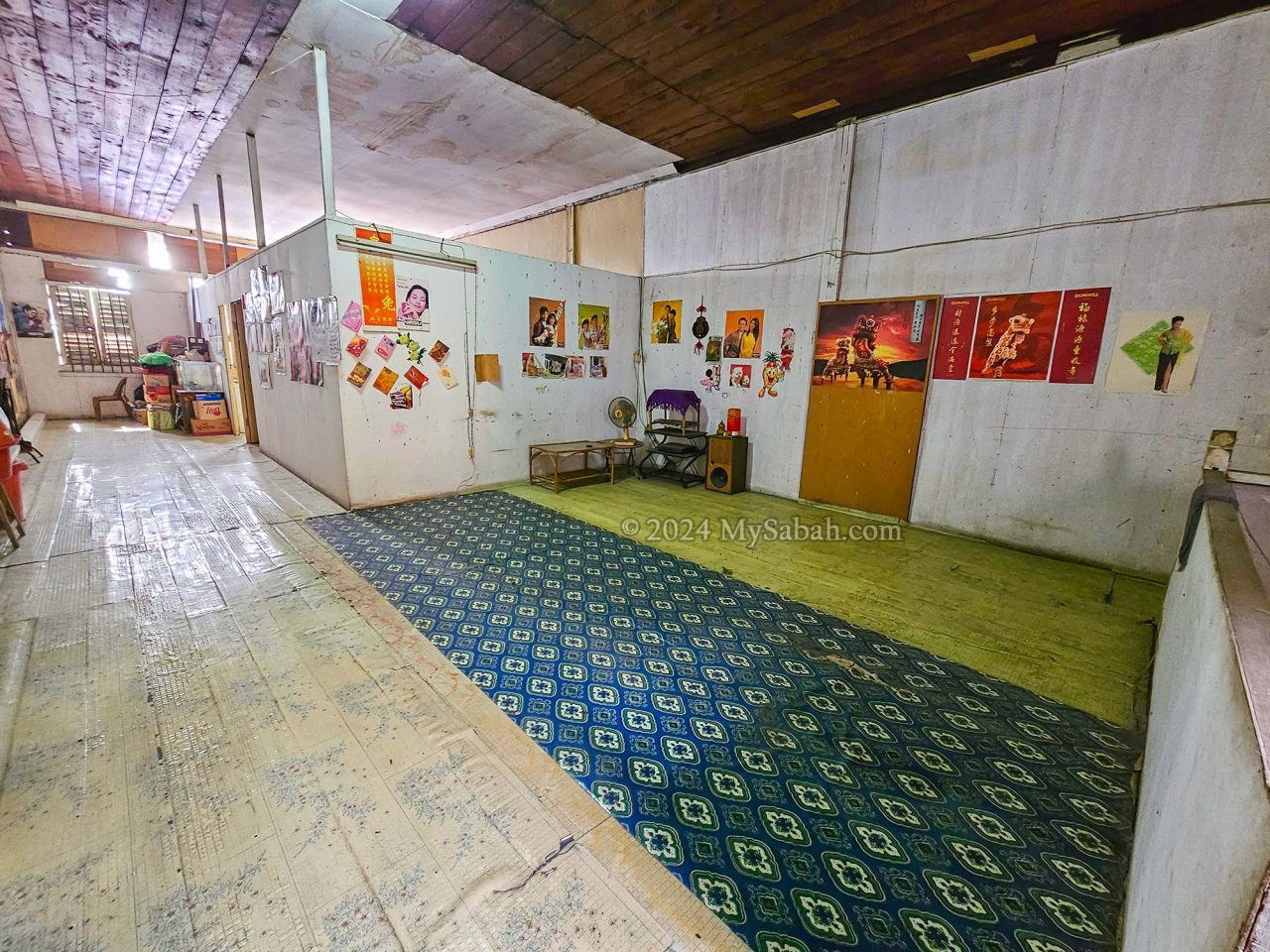
The creaky floorboards whispered tales of the past as we explored rooms filled with vintage furnishings and memorabilia. In a world of sleek modernity, there’s something charming about embracing the old-fashioned.
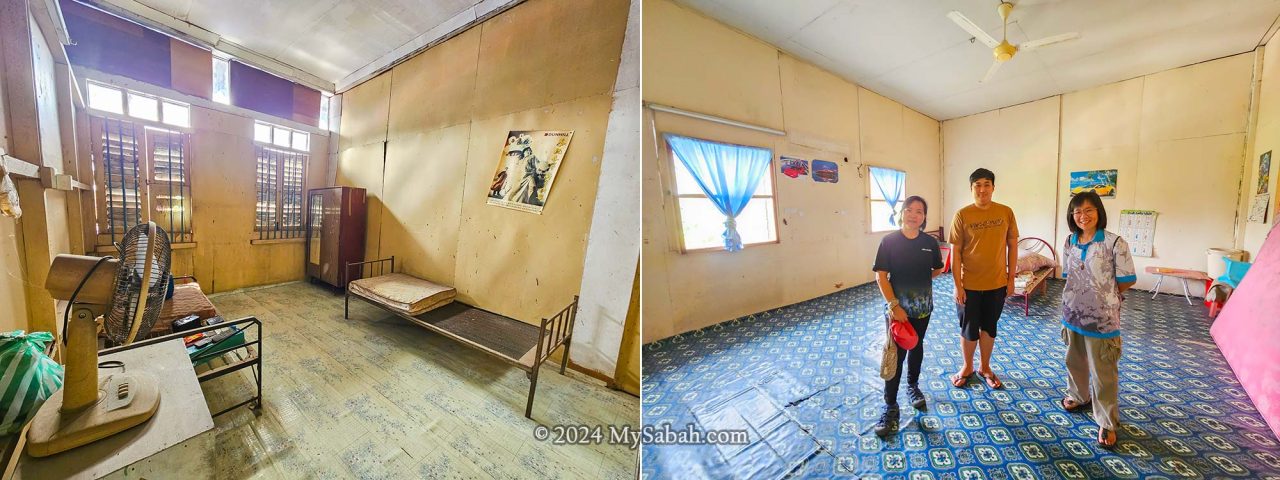
For today’s generation used to modern construction materials like cement and glass, these old timber buildings offer a glimpse into the past—a reminder of past craftsmanship and architectural ingenuity.
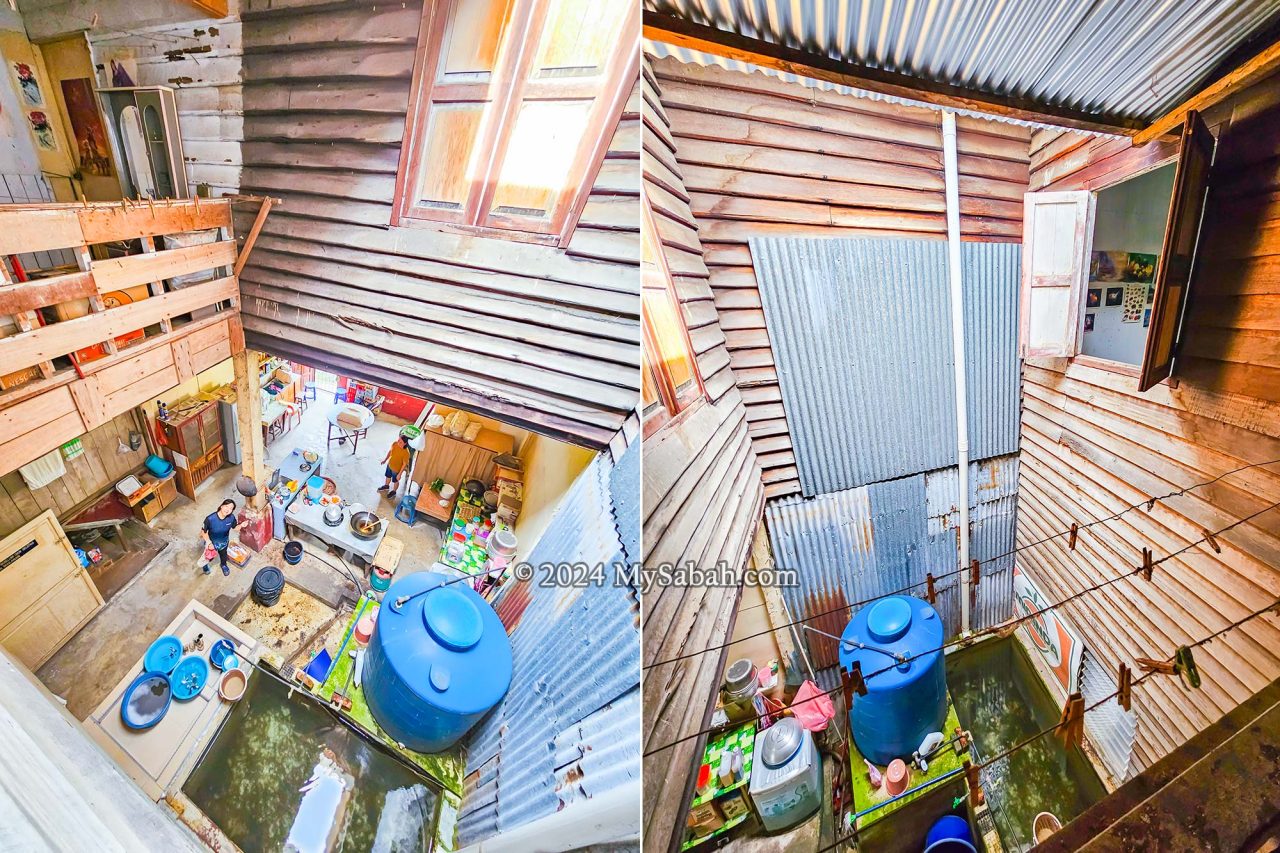
As we wandered through the upper floor, glimpses into the internal airwell and kitchen area gave us a peek into the lives of past residents. The layout encouraged interaction between floors, with voices echoing throughout the house.
The Importance of Old Buildings
Destinations like France, Thailand, and India draw throngs of tourists thanks to their rich cultural and historical heritage. Borneo is a “brand” renowned for its natural beauty and adventurous tales of European explorers. Yet, without historical relics, Sabah risks losing its distinctive Bornean identity.
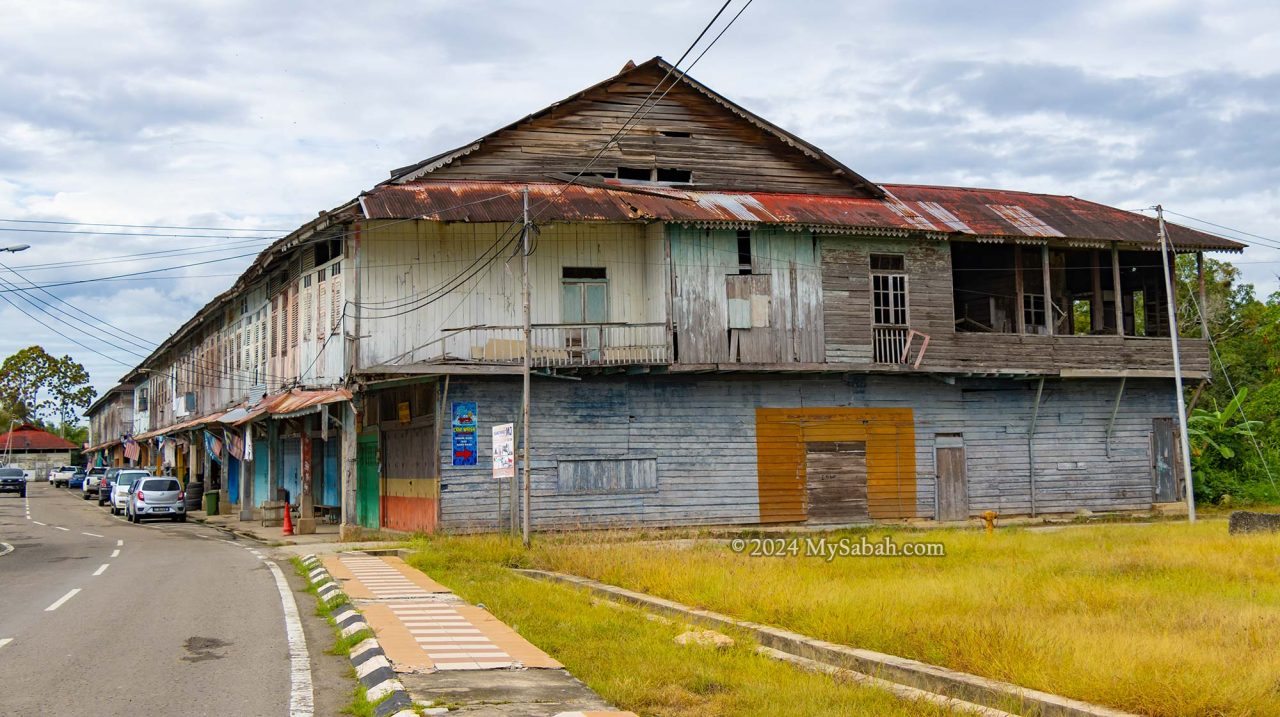
The colonial buildings in Membakut, adorned with lattice-framed arches and bargeboards, serve as potential models for architectural restoration. These structures, bearing the “North Borneo” timestamp, hold immense historical and tourism value that warrants preservation.
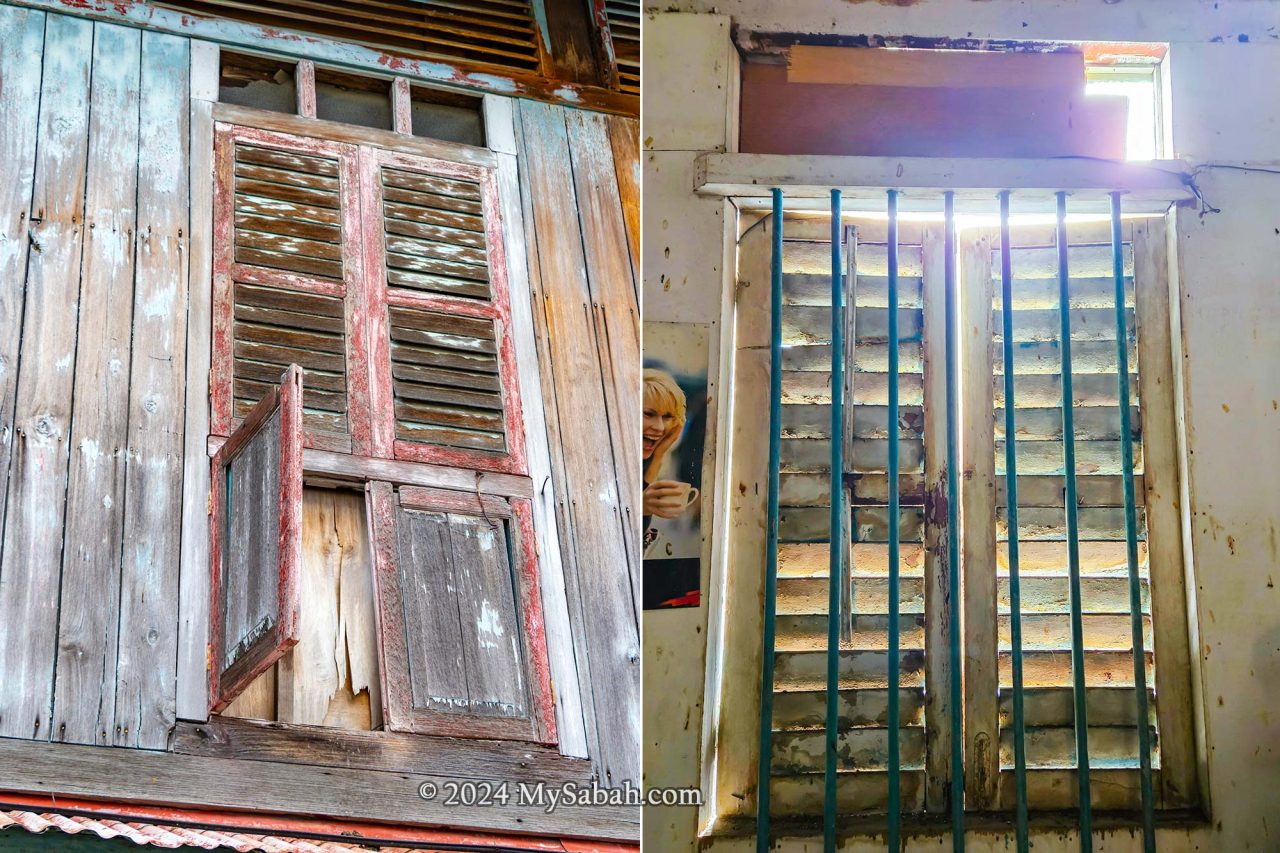
In West Coast of Sabah, landmarks from the British era have largely vanished, leaving only a handful of colonial buildings standing—now in a state of ‘critically endangered.’ While we can build new hotels, shopping malls, and high-rises, we can’t build an old building.
Unfortunately, existing old buildings face threats from fire and termites. Without proper preservation efforts and modern firefighting systems, they stand vulnerable and wait helplessly for a final blow. A post-war shophouse in Membakut succumbed to flames in 2011, while a colonial-era building dating back to the 1900s in Kimanis was reduced to rubble by tropical storm “Kompasu” a decade later.
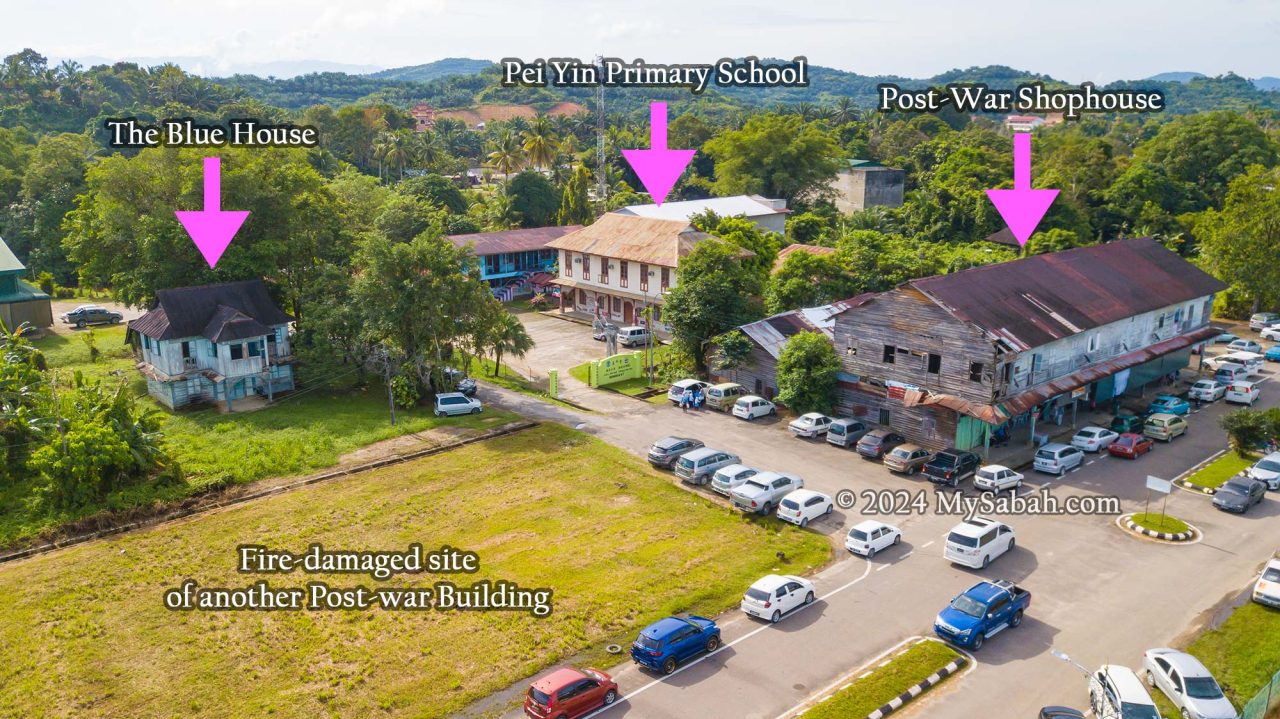
On the opposite side of the train tracks lie a row of post-war shophouses. Adjacent to these stands Pei Yin Primary School, another colonial gem. Facing the school sits a small abandoned house known as the ‘Blue House.’
Post-War Shophouse
Situated on the far side of the railway tracks, the post-WWII shophouse, built in the early 1950s, once formed part of a twin row. Tragically, a fire destroyed one of these shophouses in 2011. The loss of a priceless heritage can’t be measured by monetary value.
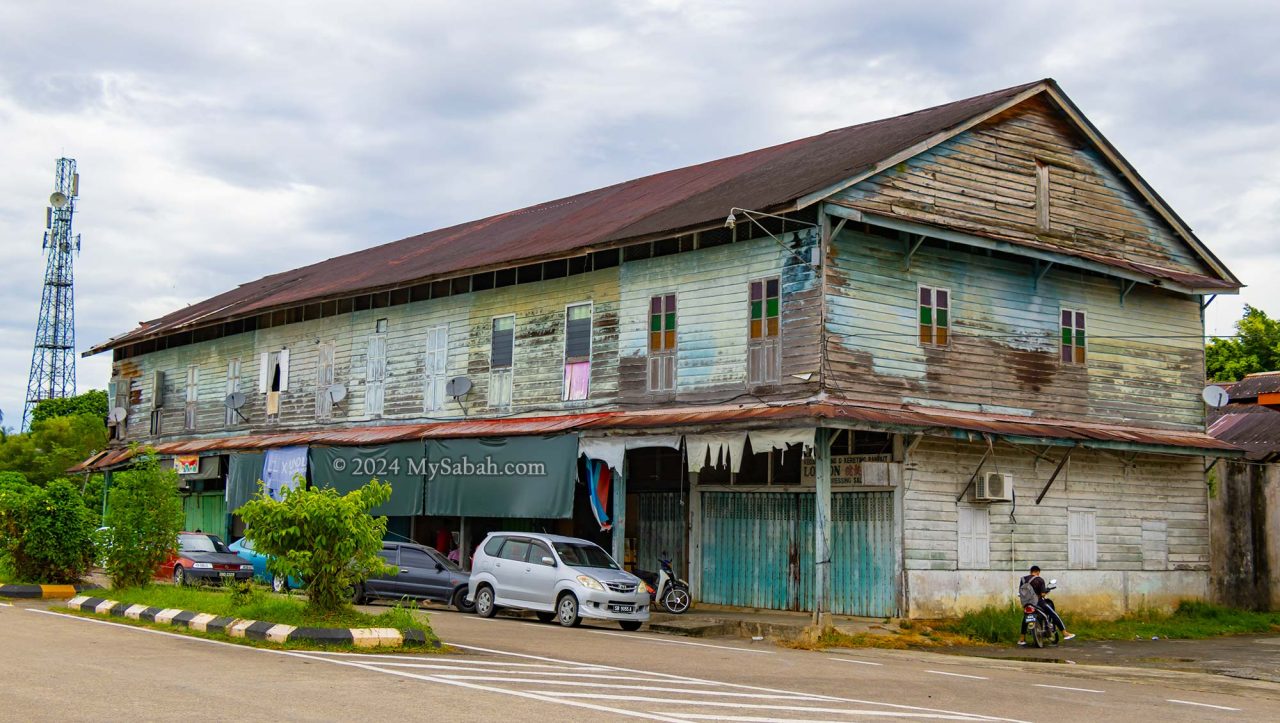
Despite being two decades younger than its pre-war counterparts, this shophouse embodies the distinctive characteristics of North Borneo colonial architecture. Vintage signboards and timber folding doors adorn the shoplots, providing picturesque backdrops for nostalgic photographs.
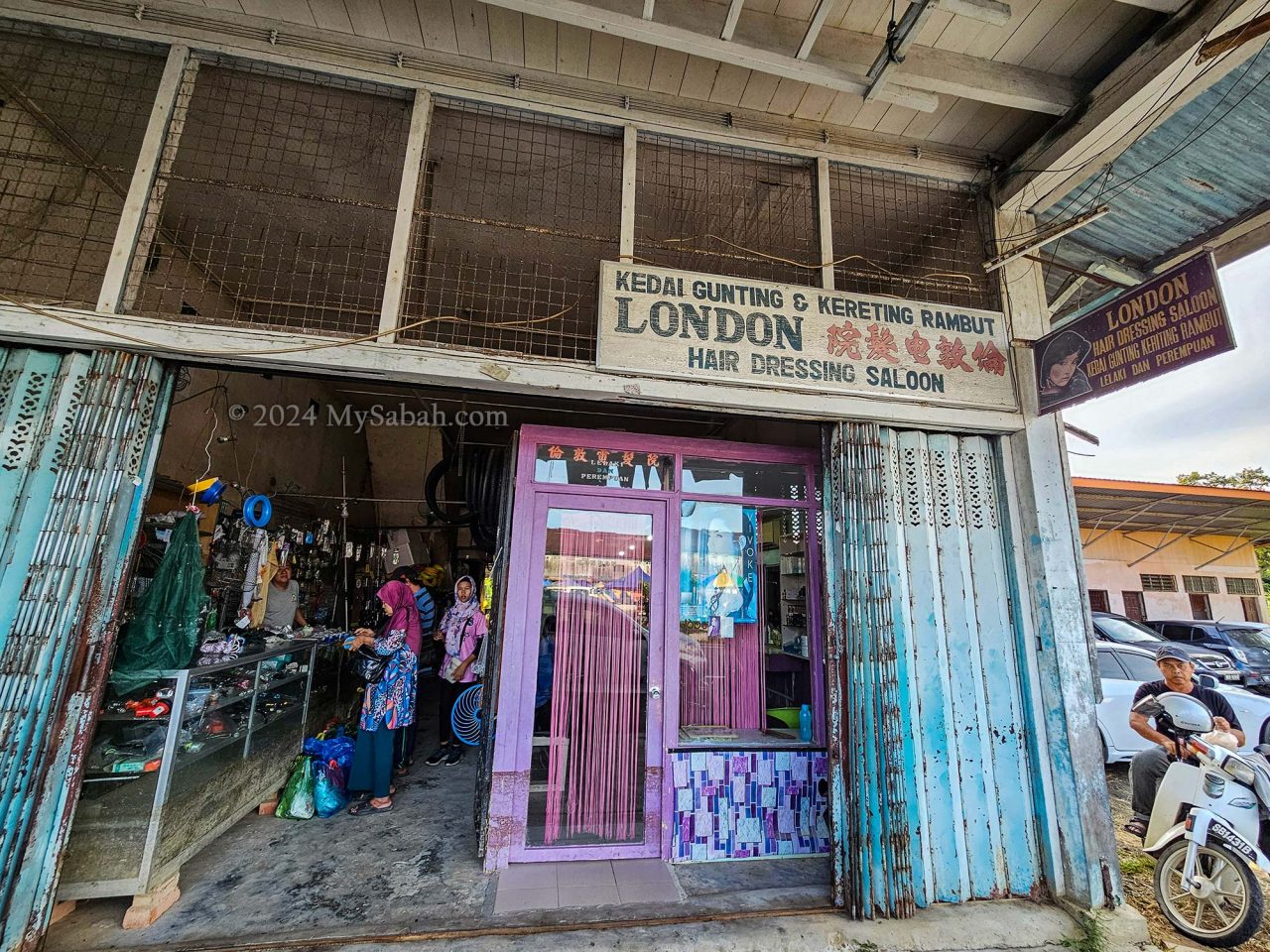
Amidst our exploration, the friendly locals observed our wanderings with smiles, eager to share tales and stories into Membakut’s rich history. From their faces, I can see that they are really proud of their heritage buildings.
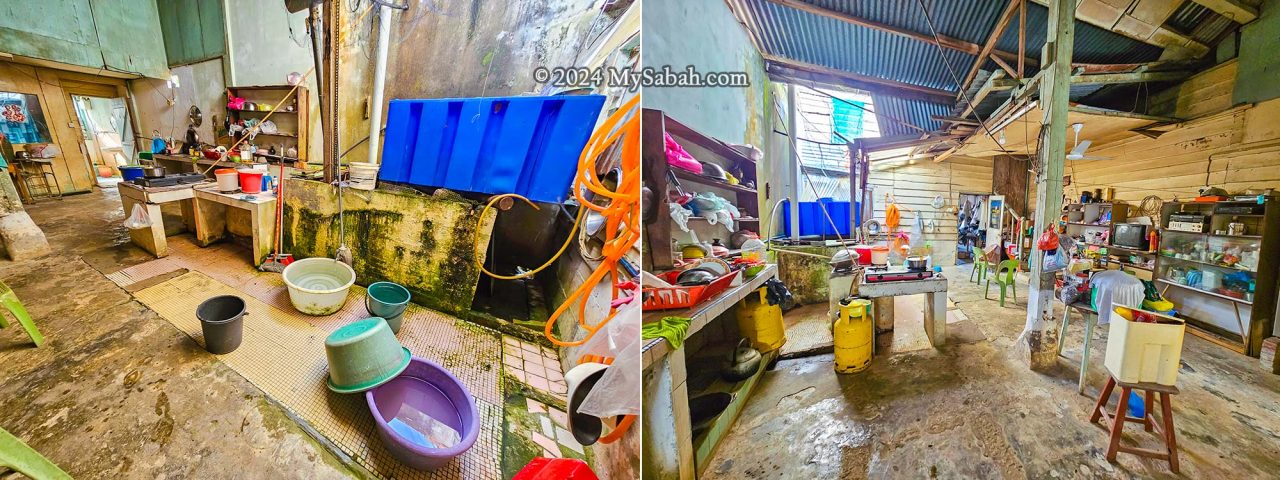

We stumbled upon several concrete pavement slabs adorned with etchings of Chinese coins—a symbol of good fortune and prosperity. Two of these slabs bore the annotation ‘1953,’ a testament to the enduring legacy of the Membakut post-war shophouse since its establishment.
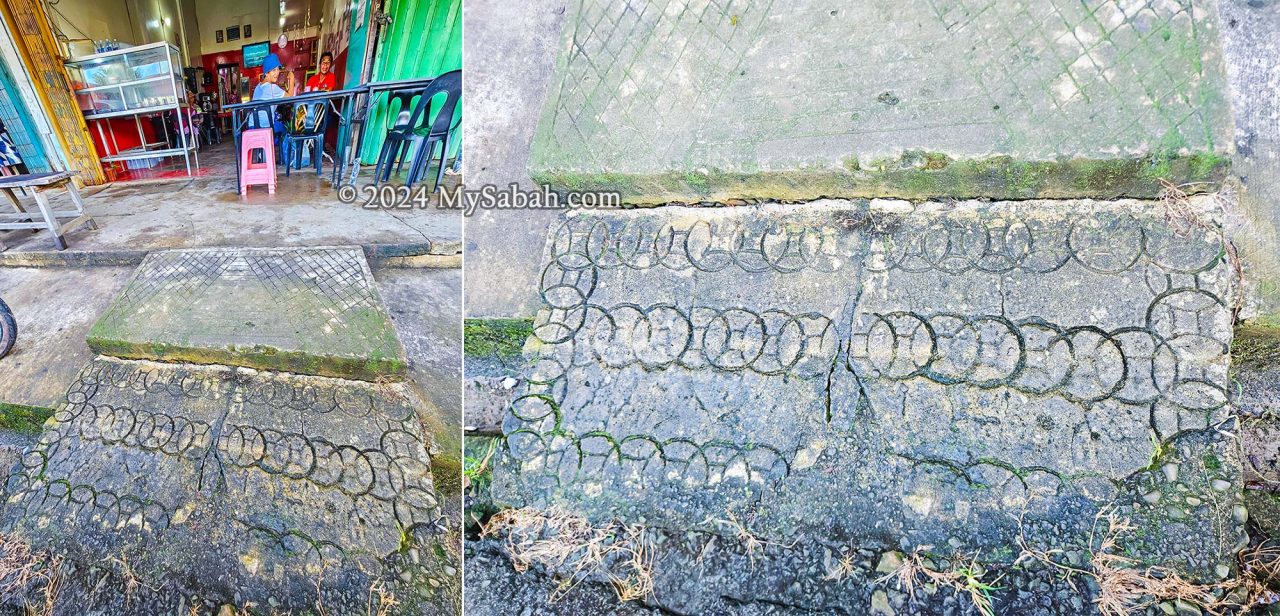
Pei Yin Primary School (培英小学)
The striking red and white façade of Pei Yin Primary School bears distinctive features of colonial architecture. Notably, the intricate stone posts adorning the building’s design mirror those found on the ruins of the Old Welfare Building—a popular site for street art in Kota Kinabalu City today.
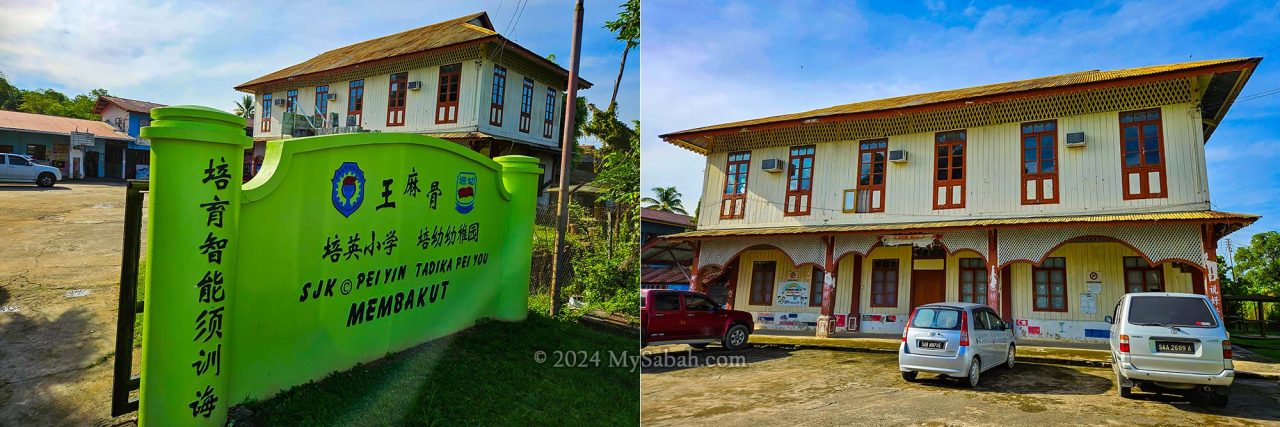
Pei Yin Primary School believed to have been built between the 1910s – 1930s, so it can be over 100 years old. Taking a moment to admire its architectural details, I marveled at the bargeboard motifs gracing the roof and the uniquely designed ‘cloud arched’ lattice frame of its front facade. It was a school day, the sounds of students reading aloud and playing echoed from within the classrooms.
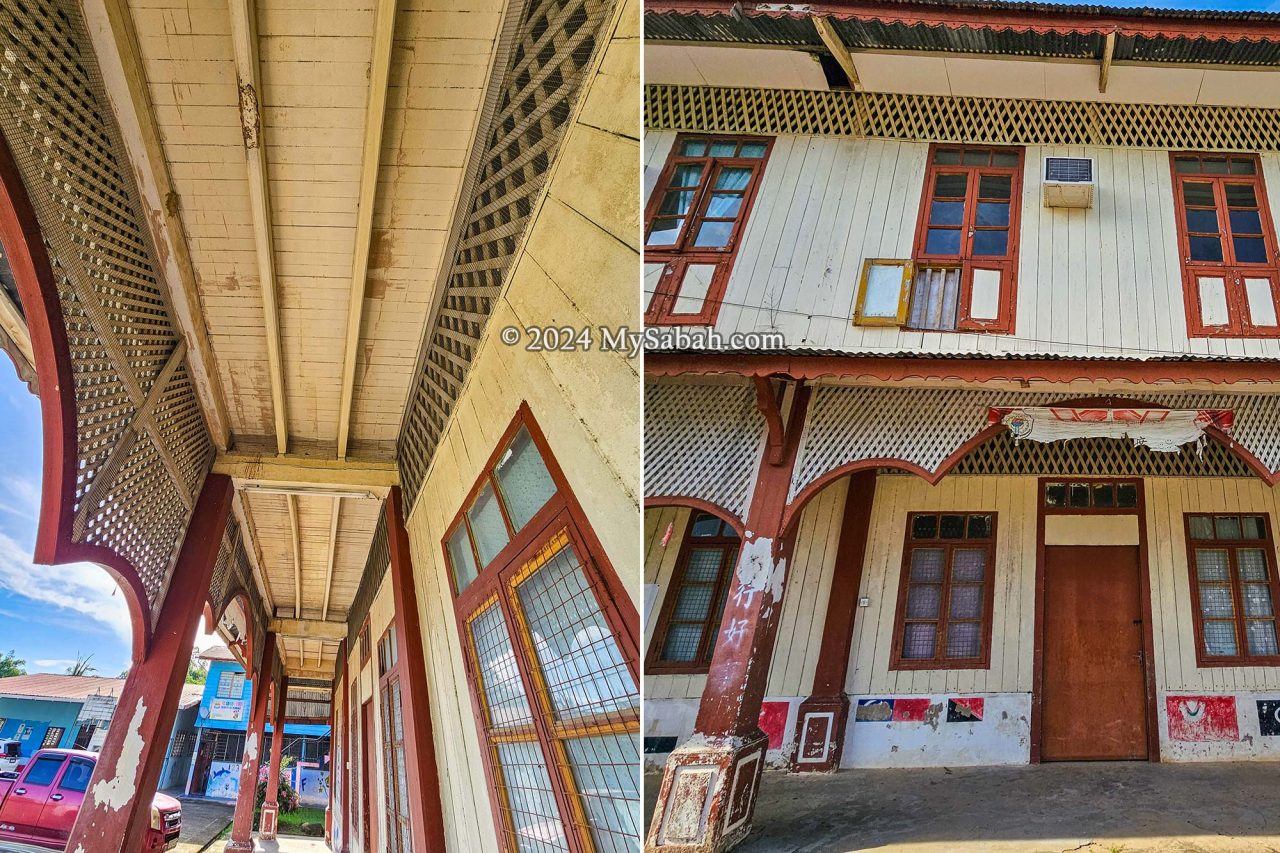
The Blue House
Directly opposite Pei Yin Primary School stands an abandoned pre-WWII residence affectionately known as ‘the Blue House.’ Likely a colonial dwelling, this building likely served as living quarters for past teachers.
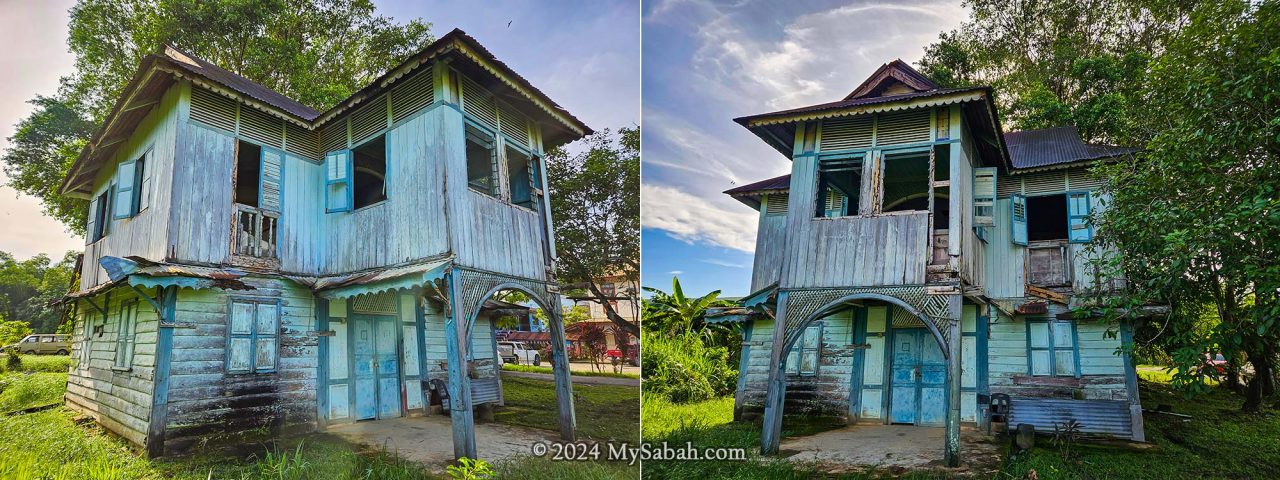
The door was locked, so we stood outside admiring the weathered textures of the arched lattice frame, the intricate bargeboard patterns adorning the lower roof overhangs, and the ornamental pendant details of the arch frame.
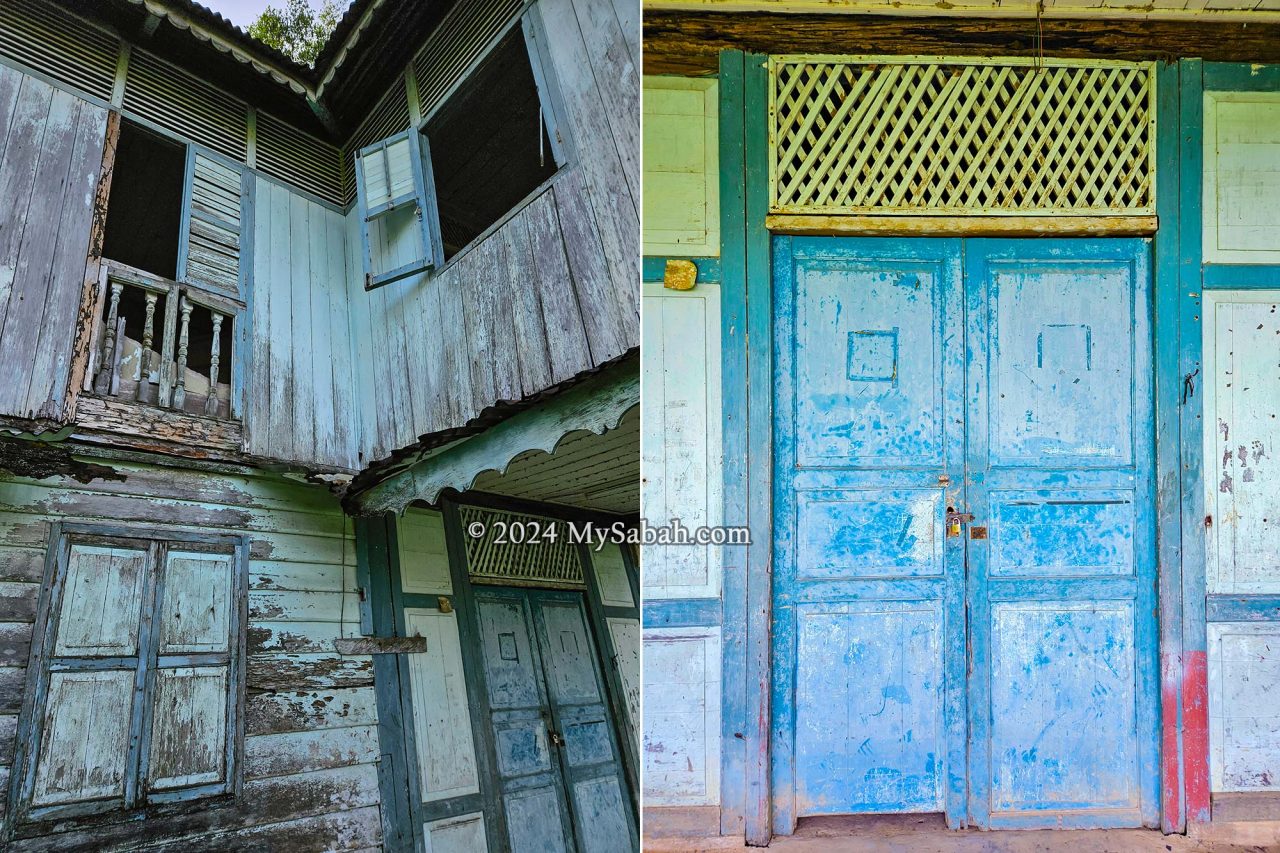
The History of Membakut Town
The development of infrastructure in Membakut township owes much to the bustling business activities of the Chinese community, who settled in the area during the early 1900s to 1920s. Throughout the 1920s to the late 1930s, Membakut rose to prominence, boasting a diverse population that included Bruneians, Chinese, Kadazans, Dusuns, Paitans, Javanese, Bisayas, and others. This vibrant mix of ethnicities engaged in various agricultural pursuits such as rice paddy cultivation, rubber tapping, and fishing, with their produce being traded via the North Borneo railway to neighbouring settlements.
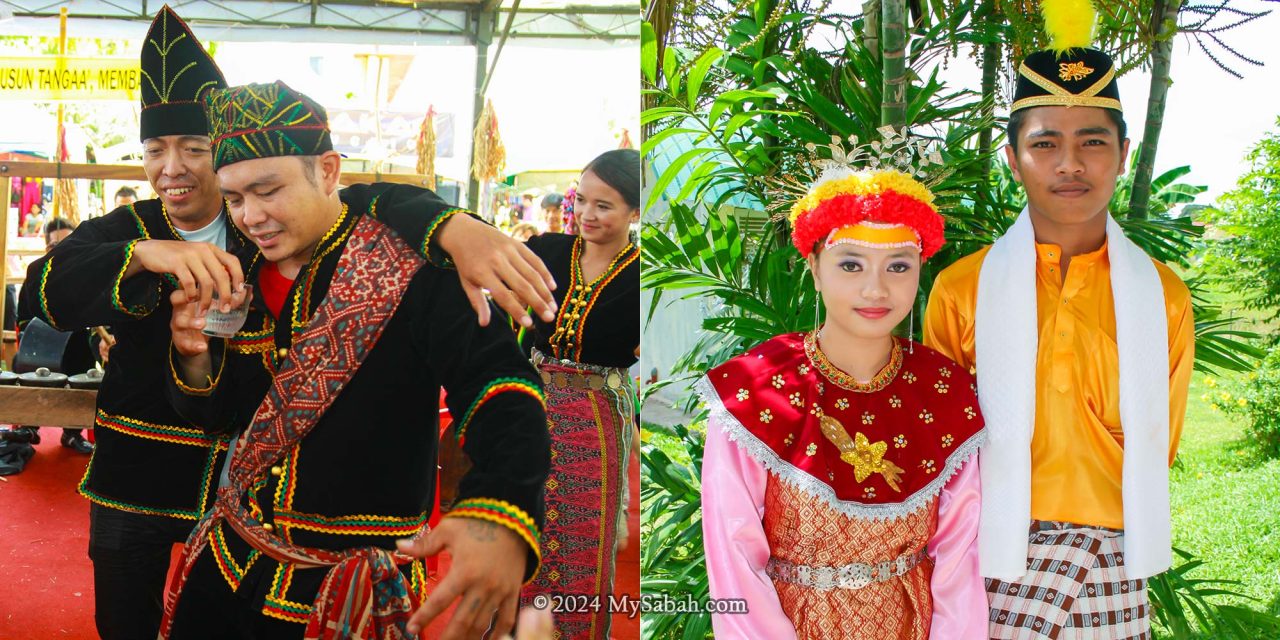
Datuk Teo Chin Ping, affectionately known as ‘Datuk Akong’ among locals, shares memories of Membakut from around 70 years ago. At that time, the township was home to approximately 300 to 400 households. The Hakka predominantly worked as farmers, cultivating rubber and citrus fruits, while the Hokkien managed grocery stores, and the Hainanese operated restaurants. Meanwhile, indigenous people were involved in paddy, tapioca, and sago cultivation, as well as fishing. Intermarriages between Chinese and native communities were common, and all races lived together like one big family.
The Origin of the Name “Membakut”
Membakut derives its name from the local Bruneian dialect, where “Bakut” translates to “Fort,” so the term “Membakut” literally means “to make a fort.” Carmelita, a resident of Kg Limpayau, recounts various versions of how the name “Membakut” originated. According to her mother, Rupinah Mikil, early settlers from Brunei referred to the place as “Buah Bakut”.
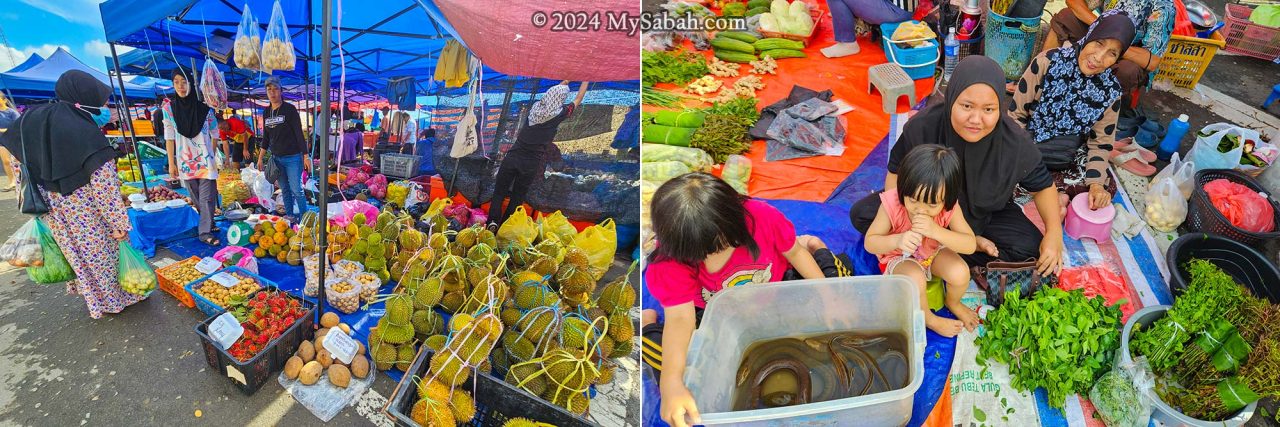
Another version suggests that the name stems from the word “Mamadakut,” derived from the Kadazan term for “the process of gathering Sago from its trunk.” Membakut was once abundant with Sago plants, making sago gathering a prevalent activity. It’s likely that the similarity in sound between “Mamadakut” and “Membakut” led to the adoption of the latter as the name for the area.
Stories of Membakut
This article might be getting a bit lengthy, but if you’ve made it this far, I’m guessing you’re quite the history enthusiast. So, here are two interesting stories about Membakut for your enjoyment.
1) Borneo Railway, Take Me Home
Datuk Teo Chin Ping from Membakut shared a story about the railway during an interview with See Hua Newspaper. During World War II, when Borneo was occupied by the Japanese, Datuk Teo was working as forced labor for Japanese forces to build and maintain the airport in Tanjung Aru. One fateful day, Teo and his friend overheard news that the Japanese were going to execute someone. Driven by curiosity, they walked from the airport to Petagas on foot. Around noon, they climbed a tree and witnessed the brutal killing by the Japanese from a distance (probably the event at Petagas War Memorial).
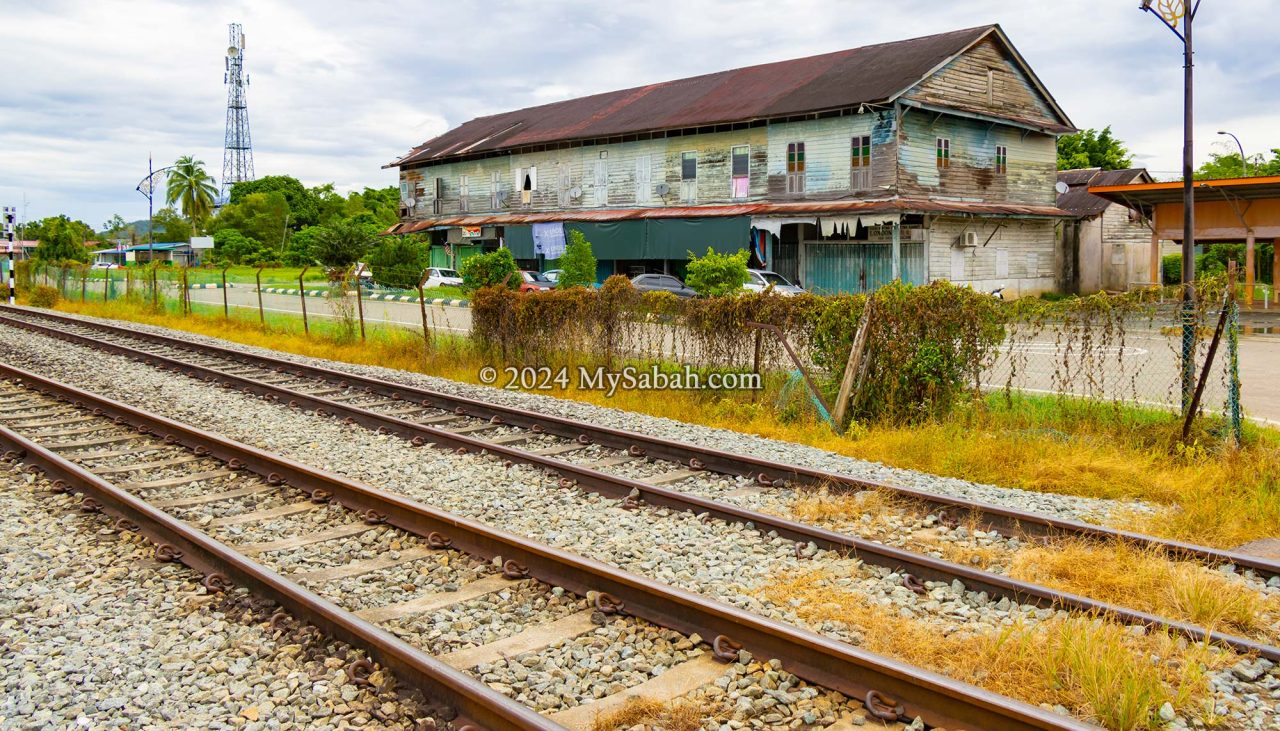
They were completely shocked and worried that they would be the next victims, so they decided to run away from the Japanese. However, they were young boys who didn’t know the way home and had no adults to help them. Then they came up with a plan. Since they had been sent to Tanjung Aru by train, they reasoned that they could reach home by following the railway track in the opposite direction. One day, they left the work site after 5 pm and followed the railroad. For your information, the distance between Tanjung Aru and Membakut is about 70 kilometers, so it’s a long walk.

They continued walking along the railway. When they reached the Pengalat tunnel, it was pitch dark inside. Worried about snakes, they beat around with tree branches and burnt the fat of a wild boar as a torch. Finally, they arrived at Kampung Brunei of Membakut at dawn. They jumped into the river and took a shortcut to get home. Datuk Teo was afraid that the Japanese would come after him, so he hid at home until the war was over. Fortunately, he remained safe and witnessed Borneo being liberated by the Allies.
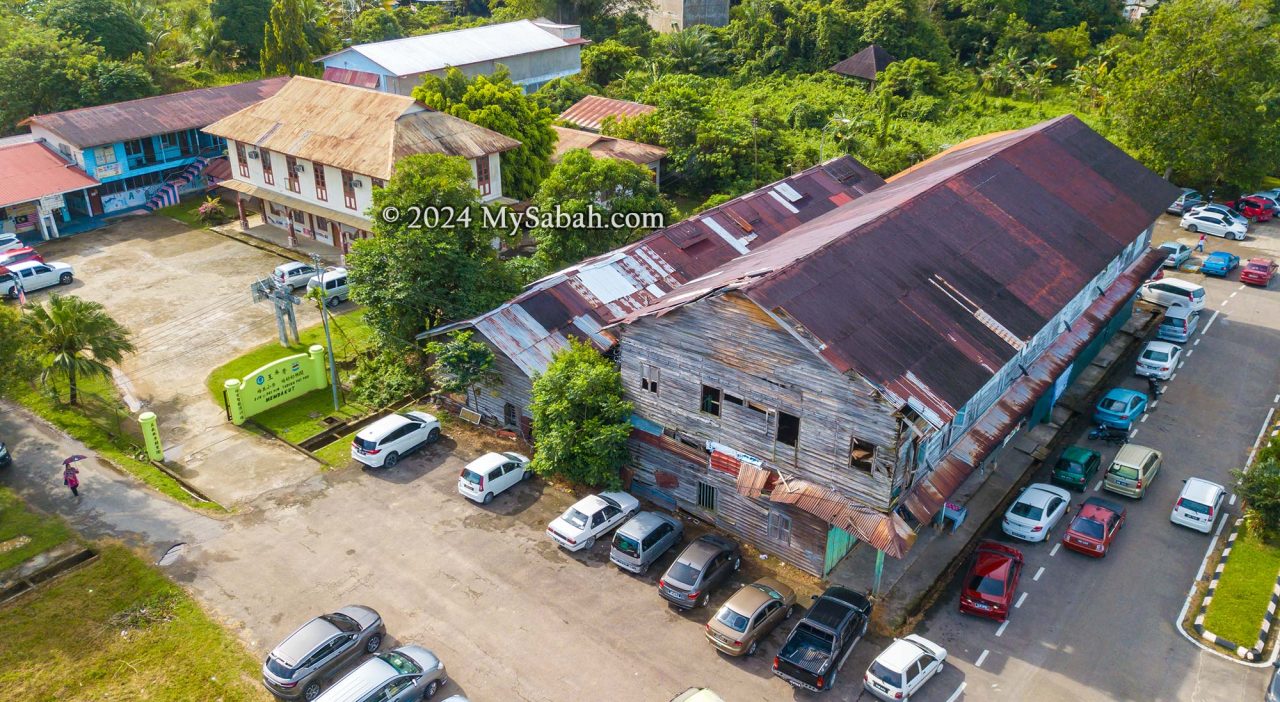
2) My Love is a ‘Member Cute’
Here’s another “romantic” story from Mr. Rimo Pirin, a singer from Kg Dungau. During the war, there was this British soldier who fell in love with a local girl. They didn’t have much time together because he was always on the move and didn’t stay long in one place. After the war, he came back to Borneo, hoping to find her. But here’s the kicker: he couldn’t remember her name, just that she was adorable. So, he kept calling her “a member cute.” The villagers were puzzled with such name but helped him anyway. The story is pretty amusing, so they’ve been talking about it for fun ever since.
How to Get There
Membakut is located in the Papar District, approximately 80 kilometers south of Kota Kinabalu, the capital city of Sabah. The town’s old shophouses and buildings are situated in the old township (Pekan Lama. See Location Map) and can be easily reached via asphalt roads.
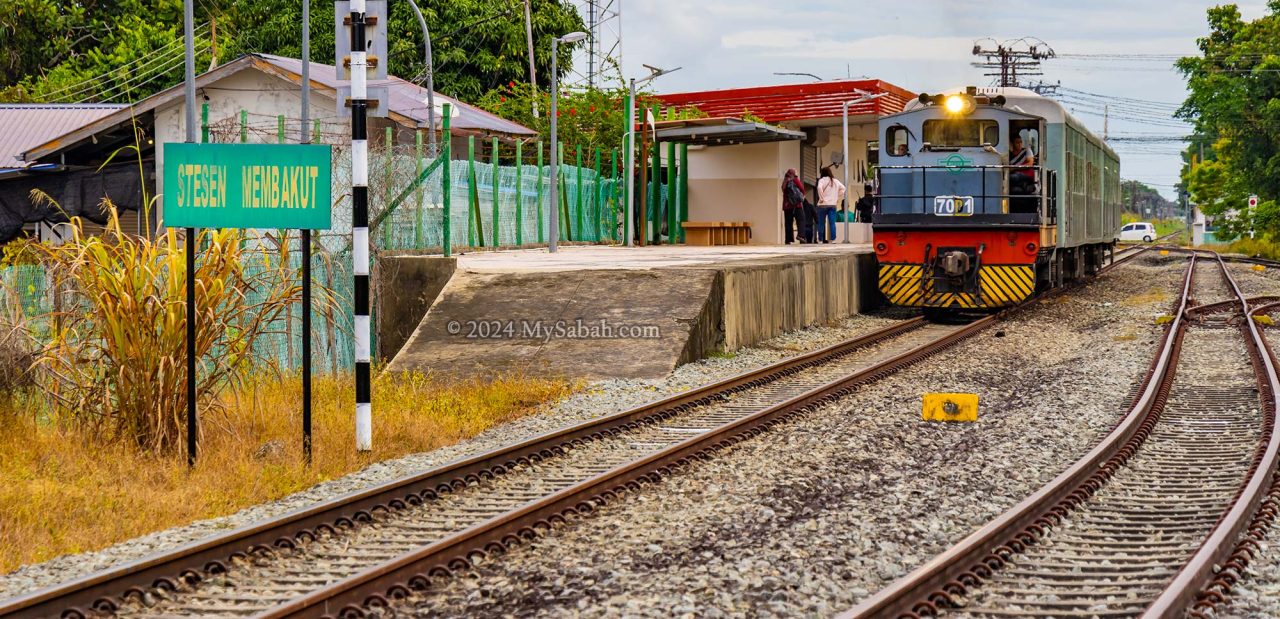
Alternatively, you can opt for a scenic train journey from Tanjung Aru train station to Membakut. Along the railway route, you’ll enjoy picturesque countryside views and pass by various historical landmarks, including the colonial buildings of Kinarut and the Papar iron bridge.
References
- Book: Sokial, Richard Nelson. Colonial Townships in Sabah: West Coast. Sabah, Malaysia: Homeland Publisher Sdn Bhd, 2012.
(I highly recommend this book if you want in-depth information of colonial building in west coast of Sabah) - Newspaper Article (Daily Express): Binisol, Lorena. “Membakut history and popular Tamu.” Daily Express, September 8, 2019. https://www.dailyexpress.com.my/read/3168/membakut-history-and-popular-tamu/.
- Newspaper Article (See Hua Daily News): “王麻骨闻人张正平 述说故乡事迹.” See Hua Daily News (诗华日报), January 14, 2020. https://news.seehua.com/post/515791.
Photos taken in Membakut, Sabah, Malaysia Borneo
